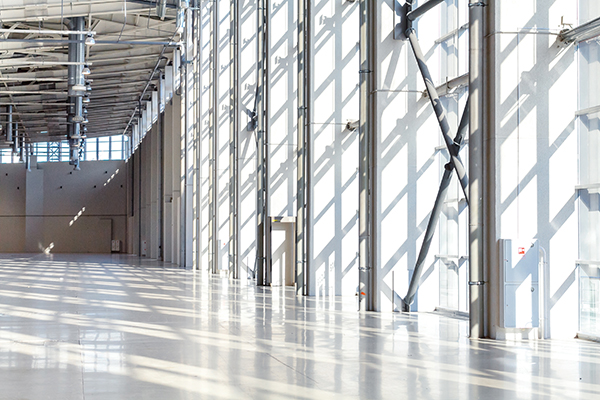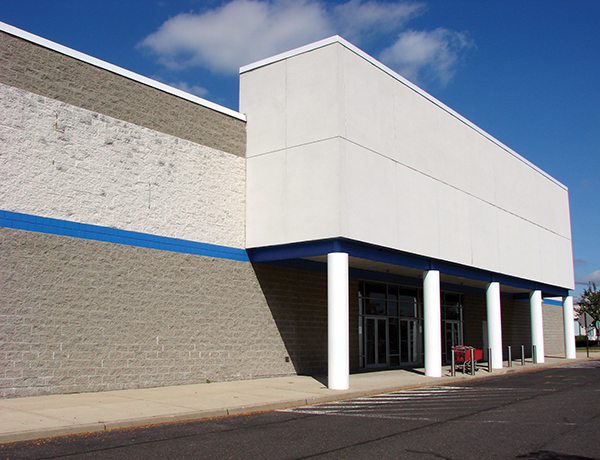
Looking at some of the most critical factors facing commercial real estate, it’s fair to say – with few exceptions – that inflation and increasing interest rates are the top considerations. Using the conventional definition of a recession, which is two consecutive quarters of negative gross domestic product (GDP) growth, the American economy is already in a recession. Going forward, any guessing will involve predictions about the depth of the recession. In other words, it’s a matter not of “if” but “how much.”
How Bad Will This Recession Be?
Overall, leading economists believe that a recession would likely be much shorter and shallower than the “Great Financial Crisis” of 2007 to 2009. First, the consumer and business sectors — including banks — have far less leverage than they did leading up to the Great Recession. This leverage contributed to the severity of the downturns experienced in 2008 and 2009. Second, because labor markets have been so tight over the past year, and businesses have had a hard time attracting and retaining talent, it’s unlikely that companies, in general, will sharply cut costs or spending in response to economic difficulty.
Even as other capital markets face the daunting prospect of inflation, real estate investors are enjoying relative peace of mind when it comes to portfolio stability, as outlined in the next section.
The Good News for Commercial Real Estate Markets

There is some good news for real estate investors. Soaring inflation has increased the value of their owned assets, creating a soft guardrail for their investment portfolios from the negative effects that other capital markets are currently facing. In some cases, foreign investors are looking to American real estate markets as a kind of safe haven for their investments under the current economic circumstances. Inflation has caused many investors to raise rents as a way to guarantee short-term returns in order to outpace the rise in operating costs. This benefit generally exists only in currently owned assets, however.
In terms of new real estate business, inflation will significantly raise the costs of capital. For this reason, it’s important that investors carefully weigh each deal to ensure that they will be able to cover the high costs of doing business. Careful deal management can help increase the visibility of the future success or failure of new commercial real estate projects.
General Trends
Before looking forward, it’s helpful to evaluate the past. While clearly, the commercial real estate industry fell on hard times from 2020 and into early 2021, significant progress has been made since. Current commercial real estate data indicates that industrial real estate and multi-family sectors continue to perform well. On the flip side, the retail and hotel sectors are struggling to recover from gains lost during 2020 and 2021.
So, what decisions influenced commercial real estate’s inspiring comeback story? Following are a few of the most popular trends that are predicted to make a positive impact in the CRE world, according to JPMorgan.
1. Increased Efforts to Update Infrastructure. More initiatives are underway to create and update national infrastructure. Enhancing roads and bridges will shorten commutes, help with last-mile deliveries, and likely improve the overall economy.
2. Understanding the Effects of E-commerce. Although the impact of the pandemic and rising popularity of e-commerce has made a dent in brick-and-mortar retailers’ profits, there are a few bright spots. Restaurants, hairdressers, spas and other service providers have maintained their popularity, which will help support demand for brick-and-mortar real estate.
3. Greater Demand for Higher-End Rental Units. As the cost of homes continues to rise, many renters are choosing to upgrade their units instead of buying a single family property. Additionally, with so many people working from home and spending more time in their apartments and condominiums, the demand for larger, higher-end multifamily units continues to increase.
All of these trends and more continue to shape the current state of CRE. But what lies ahead? Below, we’ll discuss the commercial real estate outlook for 2023 and explain the role data has to play in creating a more prosperous future.
Predictions for the Future
As stated above, the commercial real estate growth rate of all asset classes continues to increase. While some markets are still in recovery – most notably retail and hotel — the future is quite bright. Here are just a few of the future-facing factors influencing commercial property value based on predictions made by the Urban Land Institute (ULI).
Interest Rates: Current data indicates that commercial real estate will continue to grow despite rising interest rates.
Transaction Volume: Commercial real estate transaction volume levels are expected to be slightly lower after 2021’s historic high. However, forecasted transaction volume levels are still expected to surpass pre-pandemic rates, with $800 billion in 2022, $725 billion in 2023 and $750 billion in 2024.
Vacancy Rates: Vacancy rates are expected to change minimally across all commercial real estate sectors in 2023. According to ULI, industrial availability will remain low and essentially plateau. Apartment vacancies will remain tight and only creep up and retail vacancies will remain steady at slightly below their long-term average. Office vacancy rates are expected to stay elevated and plateau at above their long-term average.
Price Growth: ULI also reported that price growth tripled in 2021 compared to the previous five years. Price growth is expected to remain at 10 percent throughout 2022 but is predicted to level off to 6.0 percent in 2023.
Industrial Real Estate
Analysts from Cushman and Wakefield have concluded that North American industrial absorption from 2022 to 2023 is a healthy 855 thousand square feet (msf). While new supply trailed demand significantly in 2021, analysts expect that new supply will actually outpace demand somewhat during the next two years. New deliveries have been projected to reach 932 msf from 2022 to 2023.
At the same time, North American vacancy is expected to remain low, wrapping up 2023 at approximately 4.1 percent, which represents an increase of only 30 bps (basis points) from 2021’s year-end figures. Despite the predicted increases, North American vacancy is expected to remain 170 bps below its 10-year average (measured from 2012 to 2021) of 5.8 percent. Average net asking rents in North America are expected to increase to a new nominal high of $8.72 psf by year-end 2023. Supply-side constraints, such as burdensome municipal approval processes and regulations, will likely continue to constrain supply growth in Canada, where overall net rents are expected to remain the highest in North America at $12.37 psf by the end of 2023.
Office Real Estate

The news is less positive for office real estate, where a poor growth outlook for the short term continued to suppress office activity through the end of 2022. The news, however, isn’t all bad: tenant demand for quality is expected to drive a robust market for high-end office space, and the volume of lease expirations in coming quarters is near an all-time high.
Record interest rate increases in 2022 have reversed a trend of a decade of historically low costs of capital. These rises in interest rates have significantly disrupted office space investment activity and limited property owners’ ability to continue increasing concessions packages.
Despite these setbacks, returns of workers to physical office premises reached a post-pandemic high in September of 2022, and remote work is beginning to show signs of losing steam as the labor market tightens. Many analysts are expecting even more widespread “return to the office” initiatives in 2023, which is expected to help counterbalance companies that are slowing their growth plans.
Forward-thinking property owners and investors, together with local governments, should be exploring alternative uses for real estate that could result in conversions that will help combat high vacancy levels. While the conversion of office real estate to residential space has proven to be a difficult prospect, many real estate owners have had success in converting office space to premises suitable for life sciences, including laboratories.
Retail Space
The prospect of a recession brings less good news to retail business, though the predictions are not all bad and vary based on retail’s evolution. Neighborhood retail centers in densely populated urban areas are continuing to perform well. B and C class malls, however, were already seeing problems coming into the economic turbulence, and are likely to continue struggling.
Many companies have steadied their retail performance by embracing new business models, including blending brick and mortar with omnichannel digital sales, which is expected to keep them more relevant going forward than traditional brick and mortar businesses.mSuccessful brick and mortar interests should continue to carefully track the industry, their business and economic predictions to ensure they are aligning their strategic plans to consumer behavior. This way, retailers are in a position to avoid future pitfalls and take advantage of opportunities.
Online shopping continues to experience stratospheric growth. In 2022, 58.4 percent of global Internet users reported buying something online every week, according to a report issued by Hootsuite and We Are Social. Just over 30 percent of these purchases were made using a mobile device. As this number continues to rise, it becomes critical for retailers to ensure they have a mobile-friendly e-commerce store and a significant presence on social media.
Demand Continues for Housing
Some of the market conditions that accelerated the boom in multi-family housing throughout the pandemic have faded. Nonetheless, the ongoing housing shortage and high demand for suburban homes will enable multifamily investors to stay their course. According to CNBC, housing inventory remained at about half of pre-COVID levels as of June 2022. Additionally, many U.S. markets are significantly under-supplied in total housing units due to the under delivery of new housing, which has compounded over the past decade. High demand continues to increase rents, creating even more profitable opportunities for investors.
In most primary and secondary markets, the demand for affordable worker housing units combined with the presence of sizable percentages of vacant housing units is causing a review of how vacant units can be rehabbed.
A Case Study in Ohio
An example of this rehabbing strategy is underway in southwestern Ohio, where seldom used state nuisance property statutes are being used to increase the availability of housing units. In Montgomery County, Ohio, under Ohio Revised Code 3767.41, large numbers of code violation-laden vacant single family, multi-family and mixed-use properties are being re-evaluated as potential “nuisance properties,” thus making them available for legal action facilitating renovation and potentially bringing them back into the market.
Ohio non-profit group Community Gain is a regional leader in these efforts. Their process is to identify viable “nuisance” properties, partner with private investors and initiate court action to gain control and fully rehab the properties. The owner remains on title and has the opportunity to redeem the renovated property for the cost of the renovation plus legal and related costs. Failing redemption, the property is made available, at market rate, to the investor or the market in general.
“The process is the best of both worlds,” said David Dreety, President of Community Gain. “First, it moves blighted property back into compliance, thereby reducing inventory shortfalls; second, it reduces the drain on local government resources by increasing properties that are current on their taxes.”
The End-Game Take-Away
Markets, as a whole, are in a state of flux. Supply chain challenges, access to worker housing, global economic stability and even climate change will continue to impact commercial real estate more than any time in the recent past. Commercial real estate players are advised to keep a careful eye on the future for pitfalls and opportunities. T&ID
